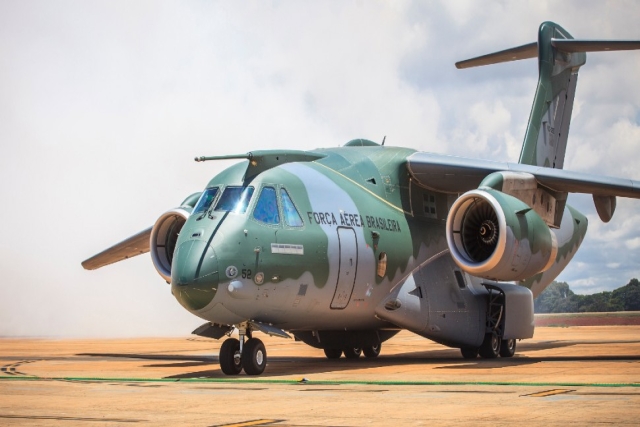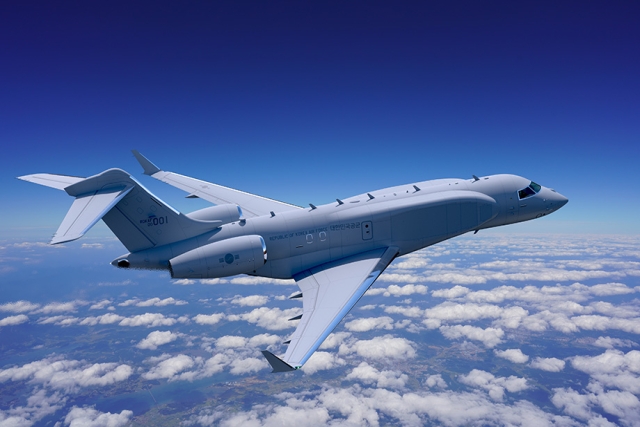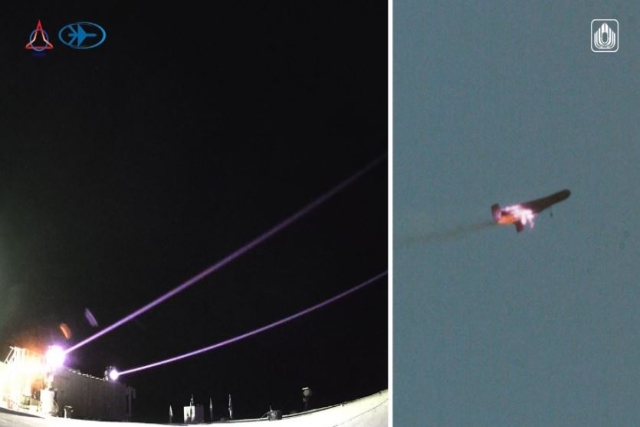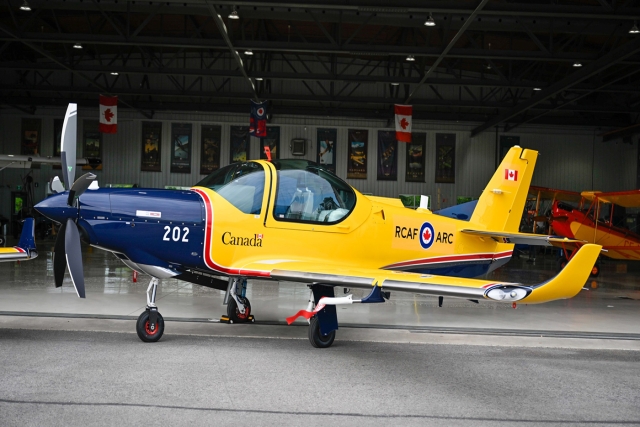Aerostats Gaining Over Aircraft For Maritime Surveillance: TCOM President

TCOM President Ron Bendlin
TCOM President Ron Bendlin talks about the burgeoning aerostat market, its defense surveillance capabilities and the competitive advantage it has over surveillance aircraft. TCOM is a US-based manufacturer of airborne persistent surveillance solutions. According to the company's website, "TCOM innovations have defined the industry, and our pioneering achievements continue to revolutionize the design, manufacture and deployment of LTA systems."
DW : Aerostat systems are gaining popularity in the maritime surveillance security division. What do you attribute this to?
Ron Bendlin: Aerostat persistent surveillance systems offer unique advantages over traditional ground-based radar, and onboard surveillance systems. When naval vessels are moored or transiting port waters, they are subject to unique surveillance and security challenges. Threats such as small, low, fast moving boats aren’t easily detectable using traditional ship-mounted cameras or ground-based radar. TCOM’s aerostat system acts as a “virtual fence” along coastlines, around vessels or around the port perimeter, providing continuous, real time monitoring of activities from an aerial perspective. The camera turret mounted on the aerostat increases the sensor’s area of coverage and reduces blind spots due to obstructions. With this elevated perspective, the system is able to detect threats that would have gone unnoticed. Most importantly, it detects threats sooner, providing security forces with more time to think, react, engage and neutralize threats at port. TCOM’s Tactical Class and Operational Class aerostat systems (12M, 17M, 22M and 28M) are ideal for the maritime deployment, directly from a vessel at sea. These aerostats can be assembled and deployed in just a few short hours, and manned by a minimal crew. This allows commanders to elect to deploy the aerostat system upon approaching dangerous areas, or when escorting a High Value Unit (HVU). The aerostat system can carry payloads including day/night EO/IR cameras, radars, comms relay and more. The aerostat can be deployed from the deck of a moving vessel, or stationary from a barge or a dock. Further, TCOM’s Operational Class aerostat systems (22M, 28M) can also be deployed from a mooring station on shore. The larger size and capacity allow the Operational Class systems to operate at higher altitudes for greater surveillance range while remaining aloft for up to two weeks at a time, ensuring round-the-clock persistent surveillance for highly trafficked areas and maritime borders.
DW : What is the competitive advantage of Aerostats over Maritime Surveillance Aircraft?
Ron Bendlin: There are several significant advantages. The first is cost. Aerostat systems require comparably minimal time to assemble and deploy, very little maintenance all at an exceptionally low hourly operational cost. This allows operators to obtain highly accurate, real-time surveillance data to inform smarter decisions, at a remarkably low total cost of ownership. Secondly, the aerostat system is capable of sustained on-station operation spanning weeks at a time. This ensures that there are fewer lapses in coverage due to refueling or unexpected mechanical issues. Further, the aerostat system functions as a versatile platform for ISR payloads, including electro-optical/infrared cameras, radar, video, communications relay, even cellular data and Wi-Fi. This means that depending on configuration, with a single aerostat system, operators are able to obtain a broad variety of actionable surveillance data and communications options.
DW : It is said that security forces will be able to detect threats that would have previously gone unseen using Aerostats. Please elaborate.
Ron Bendlin: Consider the scenario of a crowded port environment. Many ships and small craft transiting through highly congested waterways. A naval vessel enters port, but is limited to using surveillance equipment that looks outward from the deck level. In addition there may be ground-based equipment on shore. These systems together are unable to see the critical activity at the water level. A low, fast moving boat can quickly approach a larger vessel undetected by traditional methods. This occurred in 2000 with the terrorist attack on the U.S.S. Cole in Yemen. The aerostat system, equipped with sensor payloads, is capable of monitoring the entire port area, for example, including activity at the water level because it is looking down from hundreds or thousands of feet above. The system is able to detect threats and provide leaders with actionable intelligence with a greater window of time to enable forces to intercept or engage.
DW : Could Aerostats be vulnerable to threats such as missiles or aircraft? How can they be defended?
Ron Bendlin: Due to the inert nature of Helium (the gas with which the aerostat is inflated), aerostat systems do not combust, and are highly resilient in flight. Aerostat systems deployed in Iraq and Afghanistan during combat have been documented to remain aloft and functional even after being hit by gunfire. The low pressure within the aerostat hull allows the system to remain aloft even when punctured. More importantly, many aerostat systems operate at altitudes between 1000m and 5000m depending on the size and payload, which ensures that they are out of range of many threats from the ground.
DW : How big is the Aerostat market right now? What is its expected growth potential?
Ron Bendlin: According to a new market research report, “Aerostat Systems Market by Aerostat Class (Small, Medium, Large), by Balloon Type (Spheroidal, Ellipsoidal), by Payload (Electro-Optics , Thermal Imaging Camera , Electronic Intelligence, Surveillance Radar, INS), by Geography (North America, Europe, APAC, Latin America, Middle East) - Market Forecast & Analysis to 2013 - 2020” The aerostat systems market is projected to rise from $3.93 billion in 2014 to $9.96 billion by 2020, at an estimated CAGR of 16.68%. Amongst which North America and Europe are currently dominating the market; but the markets for regions of APAC and the Middle East are expected to show increase by 2020.
DW : Who are your primary customers? Are you pursuing any contracts abroad?
Ron Bendlin: TCOM’s primary customers are the U.S. Department of Defense (DoD), Department of Homeland Security (DHS), and allied governments and militaries around the world. TCOM is a partner to nations that need reliable, affordable persistent surveillance solutions to enhance border security and improve national defense.
DW : Could you elaborate on TCOM's elevated surveillance solutions?
Ron Bendlin: Air Surveillance: TCOM air surveillance systems utilize the largest class of tethered aerostats, which can routinely operate at elevations of 15,000 feet. The aerostats have the payload size, weight and power capacity to support high performance, long-range radars that can unmask aircraft operating well below the coverage pattern of ground based radars. The aerostat borne radar can detect these targets, acquire and track very quickly and maintain track on quickly maneuvering targets. In addition to the radar, the aerostat can simultaneously support passive surveillance payloads like COMINT, SIGINT and ELINT. GCI radios on the aerostat allow direct voice communications between air controllers and their interceptors even at very low altitudes. The extended range of of these platforms, along with the ability to operate continuously for weeks on end, provides security forces with the intelligence necessary to detect threats far earlier than ground-based systems alone. Early detection affords more time to react and engage these threats. Land Surveillance: TCOM Land surveillance systems employ small, medium or large aerostats depending upon the nature of the threat, the operational site, location and required operational altitude. Each aerostat is equipped with proven payloads that are designed to detect and track targets over even the most challenging terrain. TCOM aerostat systems typically carry cutting-edge optical sensors, thermal imaging systems, radars and passive communications intelligence technologies that provide ground forces with actionable data in a timely manner. This early detection of potential threats affords the critical window of time needed to coordinate forces and engage threats, if necessary. Maritime Surveillance: TCOM Sea surveillance systems use our medium-class tethered aerostats, equipped with an advanced maritime radar, thermal imaging and optical sensors, and communications payloads that detect and track maritime targets at distances of 60 nautical miles and beyond. A single sea surveillance system can cover thousands of square miles for weeks at a time at the lowest possible hourly cost for an airborne asset. The early detection and direct communications with air and sea assets affords the critical window of time to evaluate the situation, coordinate forces and engage.
DW : Which other companies offer Aerostat based radar solutions and what advantage do you offer to your customers?
Ron Bendlin: There are other companies that provide aerostat systems. However, no other system has incorporated the many innovative features and technologies that TCOM has developed in over forty years to provide the reliability needed to meet the demand. TCOM continues to develop new innovations that enhance aerostat-system performance, durability and overall effectiveness. TCOM has developed a Center of Excellence in Elizabeth City, NC that promotes innovation in the Lighter-than-Air industry, serving as the central hub of activity driving new ideas and development of new technologies. Over the past 40 years, TCOM engineers have introduced countless innovations including advanced materials, clean room construction, modern payload integration techniques, reliable ground based power systems and simplified ground control equipment. Our ongoing advancements continue to revolutionize LTA system design and manufacturing techniques. TCOM aerostats are the standard to which all others aspire. Here are just a few reasons why: Pioneering Achievements: First to use laminate materials for aerostat fabrics First fiber-optic powered tether system First tether to double as LF communications antenna First aerostat provider to offer customized payloads and mooring systems First lightning protection systems for tethered aerostats First fully integrated modular mooring system First modern aerostat system to broadcast radio and TV First aerostat to carry electronic payloads for US-allied foreign nations First sea-based aerostat system First aerostat system to remain deployed for missions of 30 days or longer First and only company to deploy an aerostat at an altitude of 20,000 feet above ground station Produced largest aerostat ever in operation Longest ongoing aerostat surveillance operations TCOM persistent surveillance systems can be customized for a wide range of deployment environments. The complete systems provide total domain awareness, improving mission effectiveness and efficiency. In every environment, TCOM systems provide mission-critical details in time for decision makers to take appropriate action.










